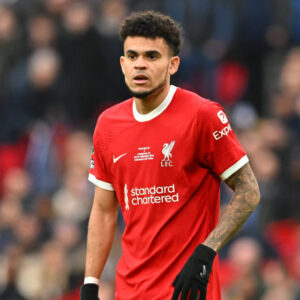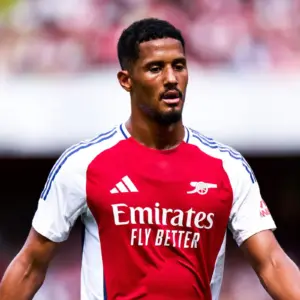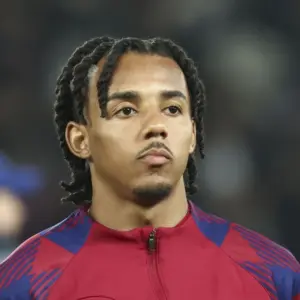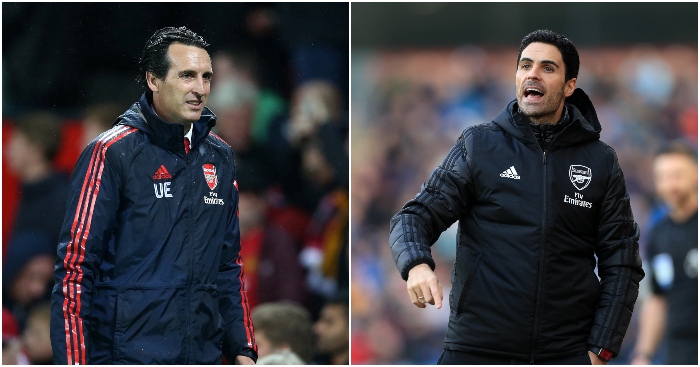
The most successful Arsenal manager, Arsene Wenger once said, “ When you look at people who are successful, you will look that they aren’t people who are motivated but have consistency in their motivation”. The same holds good for the Arsenal team this season- who are not successful as despite some good performances, they just have not found consistency in their motivation.
Three seasons down the line from Wenger’s emotional departure, a lot of things have changed for Arsenal. The squad is visibly different as both Emery and Arteta have opted to try and change the qualities with a shift towards physicality.
Signings like Partey, Torreira were applauded heavily by Arsenal fans who realized they have been light in the middle but at the same time, Arsenal has given up the technical abilities they always thrived on- with the loss of Wilshere, Ramsey, Cazorla and Ozil over last two seasons.
What Has Been The Impact Of The Transfers Made By Arsenal So Far?
Suddenly, Arsenal is stuck with a midfield who no longer progresses the ball very well and severely lacks dribbling abilities. At the same time, the defence for Arsenal has been a bane since Wenger days and that slowly has improved with signings like Gabriel, Pablo Mari, Luiz and even return of Holding from injury has added some toughness to this team. Over the last couple of years, Arsenal has also managed to add some young bright gems to this side- Saka, Martinelli and now ESR.
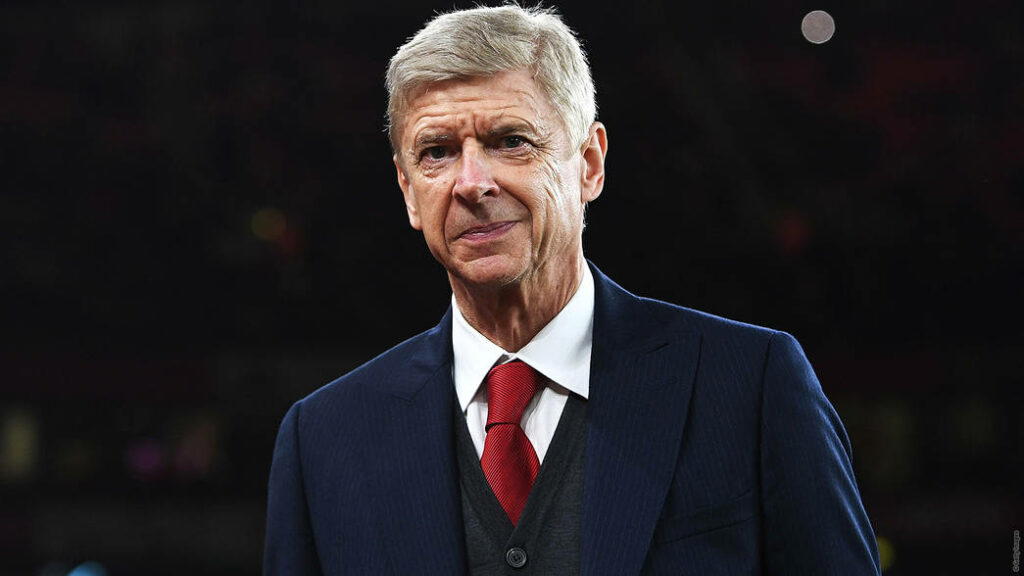
They are the new fan favourites with their brave performances being one of the few positives of the season. However, the bigger question that remains in everyone’s mind is how has the overall playing style changed for Arsenal over the last 3 regimes and what can possibly the way ahead especially under the young coach, Mikel Arteta.
Football Metrics ( Last Five Premier League Seasons)
| Season | Points | Rank | No. of Wins | Goals | Goals conceded | xG | xGA | xPoints (xRank) |
| 2016-17 | 75 | 5th | 23 | 77 | 44 | 63.58 | 47.07 | 62.12(6th) |
| 2017-18 | 63 | 6th | 19 | 74 | 51 | 72.27 | 48.75 | 65.90(5th) |
| 2018-19 | 70 | 5th | 21 | 73 | 51 | 64.80 | 57.30 | 58.97(7th) |
| 2019-20 | 56 | 8th | 14 | 56 | 48 | 50.82 | 57.25 | 50.15 (9th) |
| 2020-21 | 58 | 8th | 17 | 55 | 39 | 52.25 | 43.23 | 58.72(8th) |
What Do The Numbers Show Within The Last Give Years At The Club?
- A look at the last five years metrics shows what can easily be inferred, Arsenal has become poorer each season as an attacking side with the number of goals has reduced significantly (by 28%) over the last five seasons.
- While Arsenal overperformed the xG/xGA metrics in 2016-17 season, the next season in 2017-18 normalized that with Arsenal conceding 51 goals in what was a disastrous season especially away as Arsenal struggled heavily in away games and fell outside the top four for two consecutive years leading to Arsene Wenger’s departure.
- 2018/19 was the start of Emery’s era and while it was predominantly applauded except the fact that Arsenal dwindled their way in the last few games basically giving away top four spots but Arsenal managed to improve its rank to fifth despite conceding 51 goals and scoring a similar no. as last season. What though can easily be seen is xGA was 57.3 and the expected rank for them was seventh. This overperformance was normalized last season, at the disastrous beginning, leading to Emery’s departure midway.
Read More: Three Things That Are Making All Arsenal Fans Unhappy
- As Arsenal dwindled their way heavily throughout the season with Arteta taking over reigns by end of December and some normalcy came especially at the back with more clean sheets. Arsenal finished with the eighth spot and only an FA cup winning bringing a Europa qualification last season and a huge downfall in goals scored wrt previous seasons.
- The year this was, expectations started very high on the back of both FA Cup & Community Shield wins but as metrics have shown Arsenal have had a dull season with a slight improvement in the number of wins but a definite improvement in the defensive metrics as Arsenal end the season as a third-best defence in the season. However, a deeper look does show an Arsenal of two halves with Post December, Arsenal has been consistently getting results having secured the second-most points in the post-Christmas period.
Footballing Philosophies And Formations
Arsene Wenger followed a simple 4-2-3-1 formation for much of the latter years with Ozil playing the no. 10 roles (when available from injuries). 2017-18 winter window saw Arsenal swap Alexis Sanchez for Mykhityrian to get another creative player for Alexis who had been poor all season & Aubameyang to replace the goalscoring abilities of Alexis. Aubameyang played 13 matches in PL post his move and ended the season with ten goals and four assists.

While due to injuries, Arsenal used plenty of players around this structure, the most popular Arsene Wenger pick post-winter moves can be seen above in a 5-1 Arsenal win. Aubameyang led the team at the front while Laca was rested for Europa matches. Ozil started at no. 10 flanked by Mykhi and Iwobi on either side with the attacking pivot of Ramsey & Xhaka constantly looking to feed them.
The Concern With The Arsenal Midfield; Some Major Problems At The Club?
With Ramsey often being an attacking no. 8, we were often leaving Xhaka in a role where Partey finds himself nowadays- handling midfield alone. It was risky and often created opportunities for opponents on the counter. A look below at the three most popular formations used by Wenger in the last season.

Data from Understat.com
Arsenal played a lot with 3-4-2-1 in the first half of the season. Ozil when available would use the spaces well. The former German international would combine as the other midfielder would join Laca providing a couple of options for ball movement. Bellerin and Kolasinac would alternately attack the forward areas.
The forwards would move in and out resulting in unpredictability and difficulty to track for the opposition defence. This however combined with a less physical midfield meant that the oppositions often had opportunities to counter-attack. They would be using the half-spaces resulting in 3 vs 3 situations with the defence.
With Ozil, Arsenal also tried to move to a 4-2-3-1. This was to supplement his creative abilities. However, with a lack of midfield support, we did struggle to create as much as other systems. Also, it resulted in xGA of 1.33 with Arsenal always prone to counter-attacks. The xG however was consistently around two. Arsenal created a lot of opportunities for their forwards especially once Auba came over.
Ramsey ended the season with eight assists. He was tied with Ozil and Xhaka was close with seven assists. Mykhi’s impact was high as he ended tied with Ozil for xA/90 on 0.38. Despite playing only 800 mins, it felt Arsenal found a logical alternative/supplement to Ozil on the field. Lack of solid defensive midfield options however did Arsenal as they ended the season with one of their worst away runs and the defence looked out of sorts most season.
2018-19—Emery Era
“I prefer to win 5-4 rather than win 1-0”- Unai Emery
Emery was known as a manager for his tactical flexibility and fluidity. This was in marked contrast from his predecessor, Arsene Wenger. He was someone who always liked customizing his team as per their opponent’s weaknesses. Due to this focus on oppositions, Emery used eight major formations in 2018-19 (more than 150 mins).
That was in comparison to Wenger’s three in the earlier year. The most common one however remained a 4-2-3-1 used for around 1700 mins. This was followed by 3-4-2-1 like the season before under Wenger.

Data from Understat.com
Arsenal, however, were worse at the back regularly conceding big chances. While over the season Arsenal equalled 51 goals from the last season, the xGA has been the worst over five years. Despite the addition of Lucas Torreira at the base of midfield, they scored 33 goals. Further, they conceded 26 using their favourite formation. ( Xg/90-1.66 and XgA/90-1.54).

Progression from the back under Emery Attacking options under Emery
Source- Tifo Football
While Emery used a 4-2-3-1, the progression style under Emery was distinct as we had both defenders using 3 forward options to progress the ball. As they moved up the pitch, the shape slowly moved to a 2-4-4 as both fullbacks remained wide & the wingers tucked in as inside forwards ensuring opposition is stretched trying to mark our fullbacks. We saw Kolasinac flourish under this set-up as he was often attacking down the flanks but letting down with his crosses.
Read More: Who Can Be Aubameyang’s Replacements If He Leaves
In 2018/19, Arsenal was the second-highest team to attack from the left-wing using Kolasinac but the result was not as good. This eventually led us to buy Tierney ( who unfortunately hardly played under Emery). Bellerin however struggled in his role as he would often be caught out with the ball and also, could not provide many options from the width. With both flanks lacking a good crosser, the ball was more often switched back to the centre before creating chances something where the talents of Ramsey & Ozil/Mykhi help.
Of the two midfielders, Emery often used Xhaka, Torreira or Guendouzi in his role as he focused on adding stability to the middle with the midfielders most involved in buildup alongside defenders. All the three were solid in ball retention and hence, used by Emery. However, while players were selected to bring stability, the overall structure was unstable often putting pressure on Xhaka & Guendouzi.
In 2018/19, 26% of Arsenal’s goals conceded were caused due to errors. The lack of mobility of both CMs meant when pressed well, the Arsenal CBs lacked options to push the ball centrally and Kolasinac was pushed higher up meaning he could not help much during build-ups. This meant Arsenal’s CBs were under constant pressure & arsenal started conceded a huge no. of shots. This became more prominently as Emery insisted on playing from the back and errors started to grow as we saw in the 2019-20 season.
Arteta Era at Arsenal 2019-20 and 20-21
Arteta has widely used two distinctly different formations alternating between a 3-4-3 and a 4-2-3-1 depending on the kind of players available to him/ selected. In 2019/20, when Arteta joined he preferred an attacking 4-2-3-1 with Ozil as no. 10. A lot of focus went on pressing the opposition with the first few games of 2020 showing Arsenal going full out in the first half only to sit back the entire second half tired and defending their position.
Over the next few games, Arteta slowly tweaked and reduced the intensity demanded until Covid suddenly disrupted plans. Post-Covid Arsenal had a different shape as Arsenal moved to a 3-4-3 post-Man City drubbing to help Arsenal stabilize their defence.

Data from Understat.com
In the 2020/21 season, Arteta used 2 primary structures only which is a huge change from Emery’s first season. In fact, while there was an attempt at playing 4-3-3 which is something Arteta wants to move to in future, it was stopped immediately ( around 180 mins only & an XG90 of -0.18 but xGA of 0.81 as well). Arteta realized he does not have players to maintain both the positional discipline of 4-3-3 also taking initiatives to ensure creative numbers don’t fall down.
Arsenal’s turnaround started with the December game against Chelsea where the introduction of Emile Smith Rowe meant Arsenal moved to a more attacking structure of 4231 which overall has been used for around 26 matches. While Arteta had tried this before without ESR in a couple of games, it had not worked at all. However, with the ball carrying abilities of ESR, Arsenal exploded attacking with an xG90 of 1.56 & also a decent xGA of 1.15. It is interesting to note that with 4-2-3-1 Arsenal also saved a lot of xGA. (delta of +7.81)!!
Let us look at both the formations and what worked and did not work for Arsenal under these two formations:-
Arteta’s 3-4-3

Build up under Arteta (Right and Left) from Football Made Simple
Arteta’s Arsenal especially last season created distinct playing routines as Arsenal created pressure traps for themselves and went past it using well-rehearsed manoeuvres. Playing from the back now had two distinct styles as either Arsenal attracted pressure on the left side leaving Bellerin open for rapid ball progression before feeding the wide wingers. Else Tierney’s wide positioning stretched the attack & ensured David Luiz could release the forwards directly and ensure a rapid counter-attack or progress the ball via Maitland Niles similar to Bellerin on other flanks. These setups ensured both defensive stability and rapid counterattacks and helped Arsenal, especially in the FA Cup win.

Arsenal’s struggles in 20-21 against deep-lying defences from Football Made Simple
Once teams understood the pressure traps, they sat back or pressed in different ways cutting off Arsenal’s primary sources of attacks. When teams defender with 4-4-2 ( as is common nowadays), they used both forwards to cut off supplies to the central midfielders. Even as Arsenal finally played the ball to the central midfielders- Xhaka and Partey/Ceballos- the opposition pressed these players.
With a lack of dribbling abilities, Arsenal’s central midfield was often forced to push the ball wide and this went on back and forth in a much-criticized horseshoe shape. While Arteta would be left screaming the team to push the ball forward, Arsenal really struggled to push the ball up especially with the huge lack of ball-carrying ability of a two-man midfield.
Similarly, while Tierney’s pace remained a significant advantage to Arsenal, his heavy focus on playing via left foot only meant a decent press would render him ineffective. This meant Arteta started trying different tactics. These included – asking Lacazette to drop deeper playing in no. 10 positions to match the numerical situation in the middle. Further, Aubameyang having the space to move inside with Tierney providing outer width. Or even trying high no. of crosses first with Laca/Auba in middle and soon with even both.
Again Arsenal really lacks good headers in the team which meant there were not many options to change things for Arsenal. Interestingly, this meant Arsenal moved very few balls through the centre (fifth lowest after first eight games) and also was the second-lowest in Shots attempted by end of October.
Arteta’s 4-2-3-1
While Christmas win over Chelsea started the 4-2-3-1 football for Arteta’s team. Odegaard’s introduction in January meant Arsenal had greater creative opportunities & Arteta used it well in some matches. The best example of this system came in our 2-1 win over Mourinho’s Spurs.
It was a prime example of how Arteta developed his 4-2-3-1 on the young shoulders of ESR, Saka & Odegaard. With Luiz starting this match alongside Gabriel they were ably supported by Tierney as LB, Cedric as RB (this was later followed soon by the resurgence of Chambers as RB).
Lacazette started this match as the lone forward and played a crucial role as Arsenal outplayed a Mourinho team in a rare outing.

Below is the average position for Arsenal against Spurs that day. As we can see Lacazette dropped a lot to the centre and almost played alongside Odegaard as Arsenal had plenty of options in the central areas to help progress the ball. What is also easy to identify is the position of Tierney that day as he pushed along forward playing alongside ESR occupying the wide-left areas.
This is perhaps the furthest we saw Tierney all season (except WBA away match) Similarly, Cedric held the width on the other side. These are the best examples of how Arteta would ideally like his team to play next season albeit with some change in players.
Arsenal Are Looking To Sign This Spanish Star?

Via Football Made Simple
Arsenal started its build-up primarily via the right side with Luiz, Cedric and Partey easily overcoming Spurs’ two-man press of Kane and Bale. As Xhaka came to the middle to collect the ball, Bale had to move inwards to negate that option, similarly, Partey was also tracked well by his opposite number. However, Cedric would stay back sometimes as a third CB ensuring Arsenal have no problem playing their way around a two-man press. Whenever Luiz had the opportunity he would switch the ball over to Tierney for Arsenal to attack the left side. Luiz had a maximum number of switchovers in the game.
Watch: Former Chelsea And Arsenal Star Slam This Performance Against England
Similarly, on the left side, the intelligence of Smith-Rowe really shone. That is, as he would tuck in and try and move into the half-spaces. This would help in providing a real dilemma for Spurs RB Doherty. Doherty initially stuck to ESR which gave Tierney a free pass. However, soon, he started focussing on stopping Tierney which allowed ESR to roam freely.
This helped Arsenal dominate the central areas alongside Odegaard. On the right side, the movement and pace of Saka caused enough trouble as well. Overall with the compactness of Xhaka and Partey- it was the most dominating performance by Arsenal under the Arteta regime in this formation.
The defensive shape of Arsenal was on the clear lines of a 4-4-2 in most matches. Lacazette and Odegaard fought and pressed from the front. Often Lloris had to go long. Kane was up one-against-two CBs. He struggled to impact the game. The domination of Partey in the middle meant there were no terrifying counter-attacks this time, unlike the away match. Arsenal retained possession and command of the field.
What Can We Conclude From This Whole Analysis About Arsenal And The Transition Of The Forward Play?
With this, ends the analysis of various footballing styles taken up over the last four-five years at Arsenal. We have had three coaches with widely different approaches. Arsenal has struggled often as they have players of a previous coach trying to catch up to the tactics next one. I would like to point out certain points that do stand out.
That is, as I analyse the last three regimes over the past five seasons. The point to note is I tried not to criticize any of the coaches. The article is purely focused to understand what the different coaches were trying to do and how the results panned out.
| Characteristics | Arsene Wenger | Unai emery | Mikel Arteta |
| Shape | Highly attacking 3-4-2-1 | 8 Major formations with 4-2-3-1 being the focus | 3-4-3 & 4-2-3-1- two shapes being used but the intent to move to 4-3-3 with right players |
| Pros | Brilliant usage of space & movements among the forwards | Ball retaining midfield, left-sided attacks via fullbacks & inside forwards | Unique rehearsed counter-attacking plays, with the transition to 4-2-3-1- a more balanced attacking style, focus on clean buildup and creating quick overloads |
| Cons | Plenty of spaces around the midfield- always prone to counter-attacks | Added stable players to the team but structure created problems especially with attacking fullbacks left spaces back wide. | A lot of dependence on young creative attackers, a lot of off-field instability as only a small group of players are favoured & used |
